The world’s 8 billion people produce so much wastewater that the natural process of water purification by itself is insufficient to remove harmful chemicals that cause disease not only in humans, but also in plants, fish and wildlife. Wastewater treatment removes pollutants and suspended solids from wastewater, treated drinking water can be returned to the ecosystem free of man-made contaminants. Without treatment, large volumes of wastewater can damage the environment. In fact, in developing countries as well, globally, more than 80% of wastewater is discharged without treatment, which can lead to large-scale disease and severe disruption of the food chain.
Understanding Effluent
What is effluent?
Effluent is water that contains pollutants or hazardous substances after it has been used, usually as a by-product of industrial, agricultural, domestic or other activities. These pollutants and hazardous substances can render the water unsuitable for use and have a negative impact on the environment and ecosystems, hence the need for effluent treatment to minimize adverse impacts on the environment.
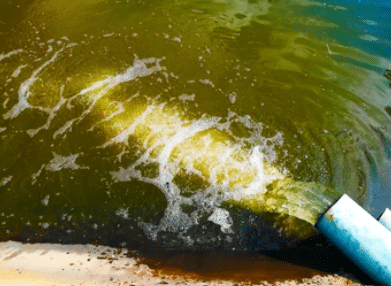
Effluent Sources
- Industrial
- Agricultural
- Urban Living
- Medical
- Stormwater and runoff
- Groundwater
Purpose of effluent treatment
The purpose of effluent treatment is to remove or reduce pollutants and hazardous substances in the generated effluent through a series of processes and technologies to meet the water quality requirements of environmental protection standards, so that the effluent becomes safe and harmless and can be safely discharged or reused.
Effluent Contains
- Fats, oils and greases (FOG)
- Chemicals
- Detergents
- Heavy metals and other contaminants
- Food scraps and kitchen waste
- Industrial waste
The Importance of Effluent Treatment
- Environment and Health
- Water Protection
- Laws and Regulations
- Sustainable Development
Untreated Effluent hazards
- Deterioration of water quality: Effluent contains a variety of organic and inorganic pollutants, such as heavy metals, organic compounds, nitrogen and phosphorus. Effluent discharges can lead to deterioration of water quality in water bodies, affecting aquatic organisms and ecosystems
- Pollution of water sources: In some areas, effluent is discharged directly into water sources, leading to the pollution of water sources and jeopardizing the safety of human drinking water.
- Groundwater pollution: Some effluent may seep into the ground and pollute groundwater resources, affecting the quality and sustainable use of groundwater.
- Death of aquatic organisms: Harmful substances in effluent are toxic to aquatic organisms, which will lead to a large number of deaths of aquatic organisms, destroying the ecological balance.
- Environmental and ecological damage: Effluent discharge will cause damage to the environment, such as soil pollution, wetland degradation, etc.
- Spread of infectious diseases: Some effluent may contain pathogens, and untreated effluent discharge may lead to the spread of infectious diseases and jeopardize public health.
What are the types of effluent?
According to the source and nature of water, water can be divided into various types, common types of wastewater are:
- Industrial effluents: Wastewater generated during various industrial production processes, containing large quantities of industrial wastes and chemical substances.
- Agricultural effluents: Wastewater generated from agricultural activities such as farm irrigation, farming and processing of agricultural products, containing pollutants such as pesticides, chemical fertilizers and veterinary drugs.
- Municipal Wastewater: Wastewater generated from the use of domestic water in residential areas such as houses, schools, office buildings, etc., containing human excreta and domestic wastes.
- Stormwater effluents: From rainwater flowing through the rainwater collection system, which may carry pollutants on surfaces such as sidewalks and buildings.
- River effluents: From rivers around urban and industrial areas, affected by discharges of industrial effluents, domestic sewage, etc.
- Surface water effluent: Includes surface water bodies such as lakes and reservoirs, and is affected by a variety of activities such as industry, agriculture, and domestic use.
- Marine effluent: Comes from the sea around the coastline and is affected by discharges from industry, ships, coastal cities, etc.
Difference Between Effluent and Sewage
Effluent and sewage are two related but not identical concepts:
- Effluent: Effluent is water that has been used in production, industry, agriculture or other activities, and may contain a variety of chemicals, industrial wastes, organics, heavy metals and other pollutants. Effluent needs to be treated after it is generated to ensure that it does not negatively affect the environment and human health.
- Sewage: Sewage is water from sources such as domestic water, sanitation discharges and rainwater collection, and usually contains organic matter such as human excreta, detergents, food waste and bacteria. The purpose of sewage treatment is to remove pollutants so that the water quality meets discharge standards or can be recycled.
Although both effluent and sewage refer to water containing pollutants, there are differences in their sources and nature. Effluent is usually associated with industrial production or other specific activities, while sewage is mainly associated with domestic and sanitary purposes.
Effluent Quality Parameters
| Parameters | Range |
| PH | 6.5-8.5 |
| Dissolved Oxygen (DO) | ≥ 4 |
| BOD | ≤ 30 |
| Chemical Oxygen Demand (COD) | ≤ 100 |
| Total Suspended Solids (TSS) | ≤ 100 |
| Suspended Solids (SS) | ≤ 35 |
| Ammonia Nitrogen (NH3-N) | ≤ 15 |
| Total Nitrogen (TN) | ≤ 20 |
| Total Phosphorus (TP) | ≤ 1 |
| Petroleum substances | ≤ 10 |
| Heavy Metals | Depends on effluent type and use |
| Sulfides | ≤ 2 |
Effluent Treatment Process
Raw sewage contains large amounts of suspended solids and oxygen-depleting organics. Conceptual approaches to treatment include removal of suspended particles, dissolved organic matter and treatment of sludge for disposal.
Preprocessing
Raw wastewater first undergoes pre-treatment such as a grating and sedimentation step to remove large particulate matter such as paper, plastics and grit from the removed effluent. These materials can clog pipes and equipment and may have a pigmented effect on the biological treatment process. KUOSI multi-rake bar screens remove harmful inorganic solids from downstream equipment. Fine screens are used to separate suspended solids from liquids.
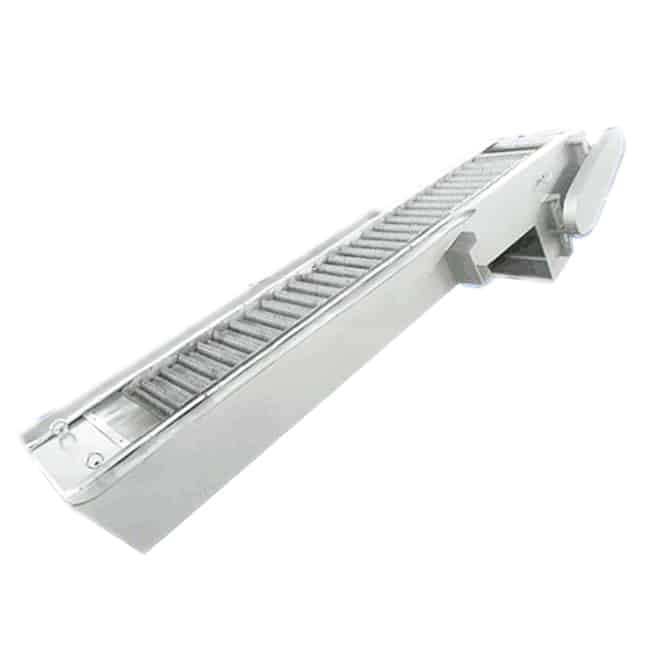
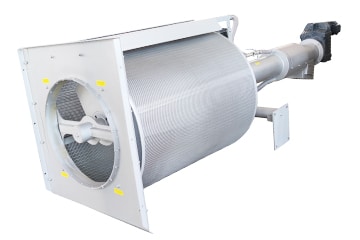
Primary Processing
The effluent is held in a settling tank so that the suspended solids in it settle to the bottom and form bio sludge. An air flotation machine is then used to generate tiny bubbles by injecting air, which floats the suspended material and removes it centrally.
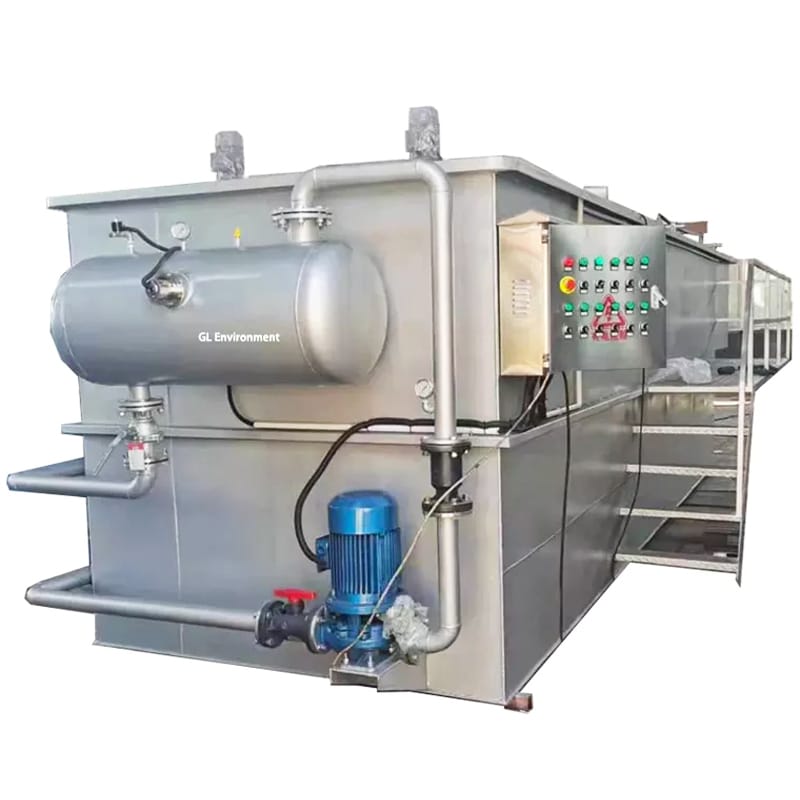
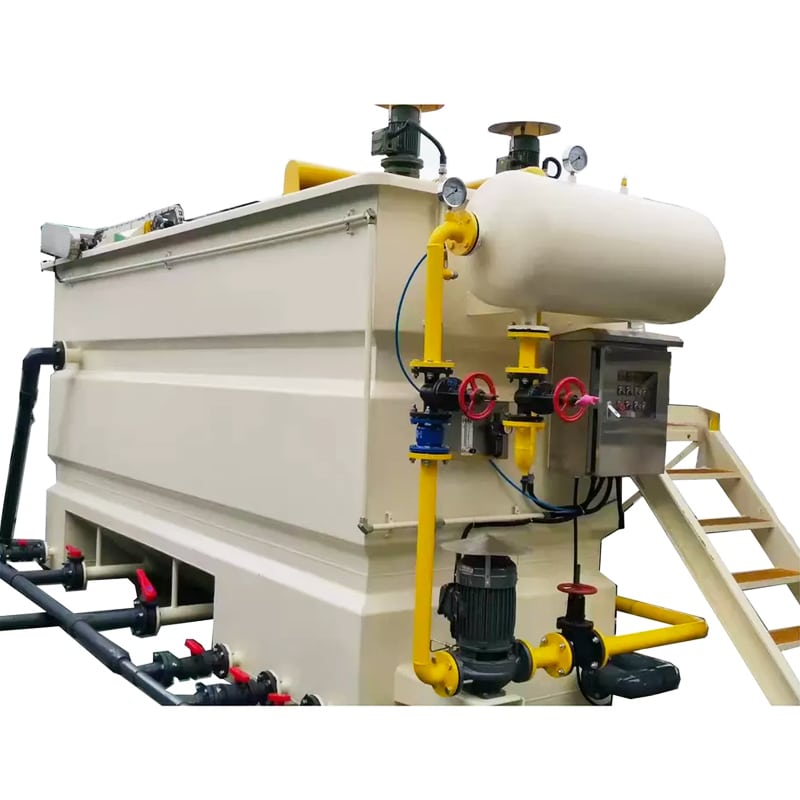
Secondary Treatment
The purpose of the biological treatment stage is to remove organic substances from effluents. Microbes and bacteria are utilized to convert organic substances into harmless ones.
- Activated pools: Use microorganisms to degrade organic matter in effluent, for example, dissolved oxygen in wastewater such as contact oxidation pools and activated sludge methods.
- Anaerobic Digestion: Breaks down organic matter in sludge under anaerobic conditions for anaerobic digestion, producing recoverable energy such as methane.
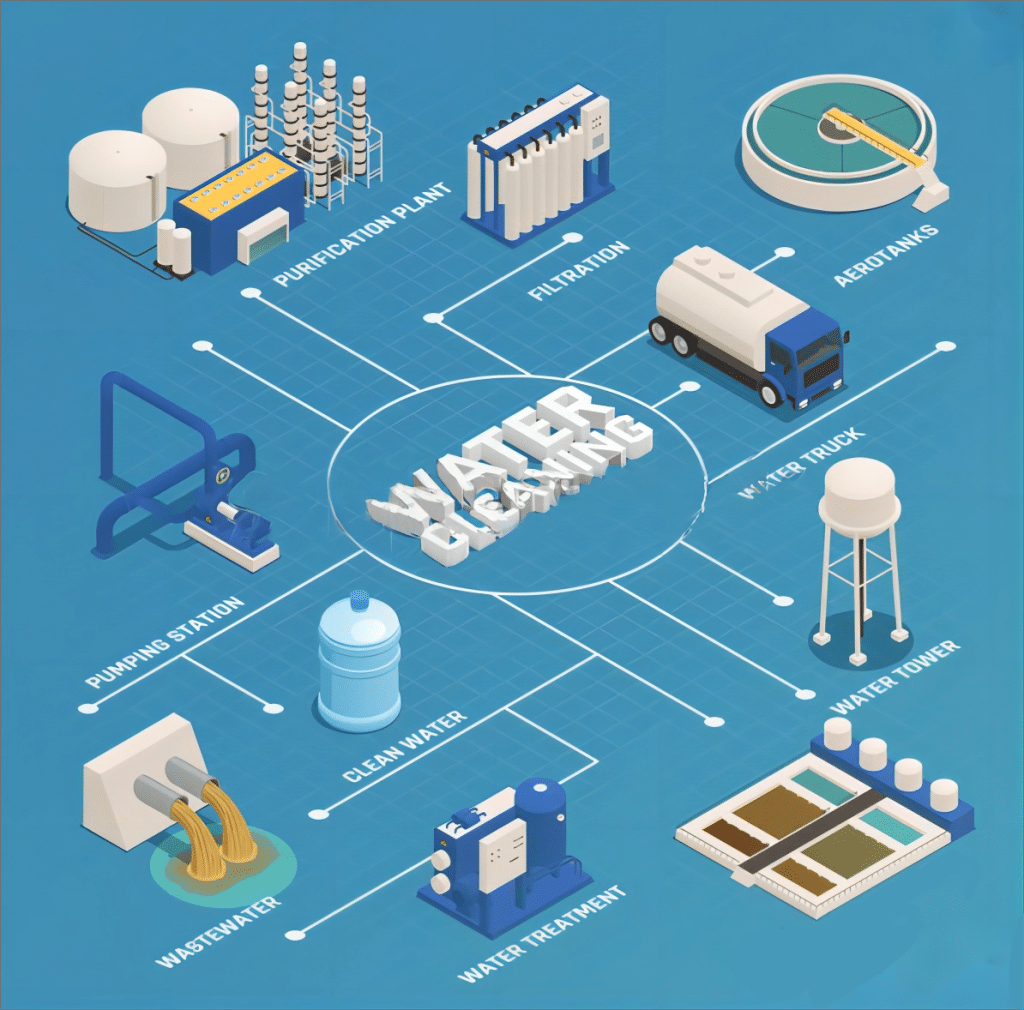
Tertiary Treatment
The objective is to remove specific yarns such as phosphorus, nitrogen and heavy metals from effluent. This is usually accomplished by chemical treatment with wastewater chemicals. Tertiary treatment removes approximately 95-99% of the effluent.
Sterilization
The purpose of the disinfection stage is to kill bacteria and viruses in the effluent. An ozone generator is a common piece of equipment used in effluent treatment disinfection systems. Ozone generator is a strong oxidizer that kills bacteria, viruses and other microorganisms. It also removes organic matter and other biocides from water.
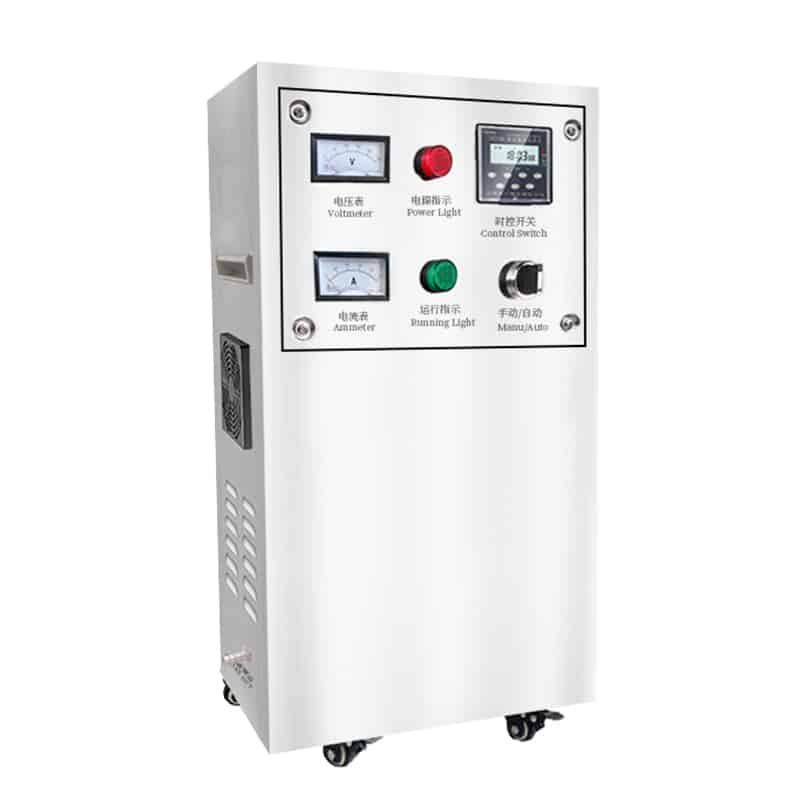
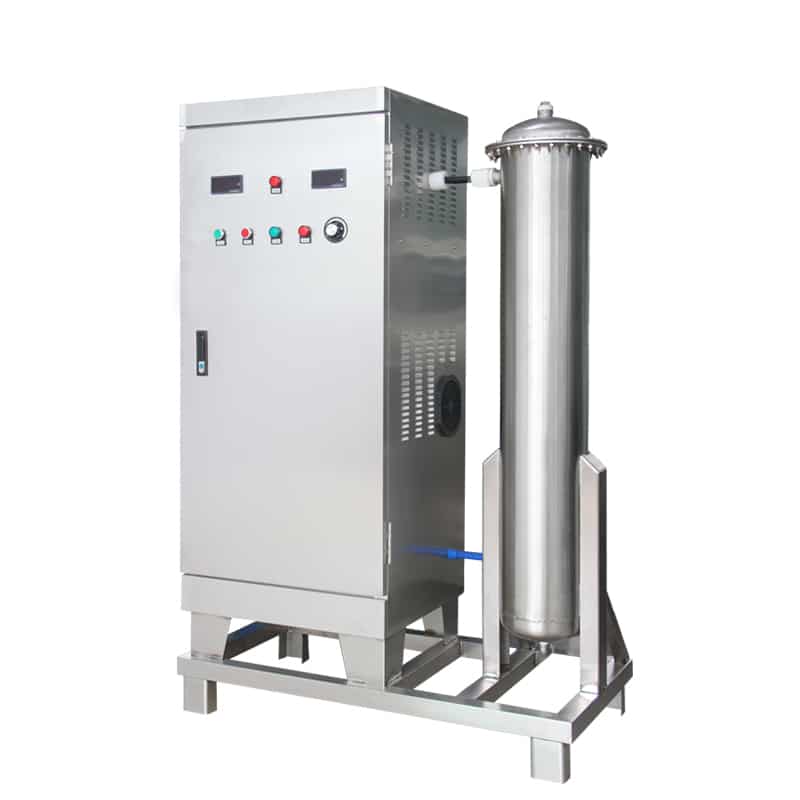
Sludge Digestion
Dewatering of sludge generated from primary and secondary treatment stages. Sludge requires further treatment such as thickening, digestion, dewatering and final disposal (e.g., sludge incineration, land use, etc.) in order to reduce its volume and burden and to improve its stability so that it can be disposed of safely, efficiently and economically.
Summary
Effluent treatment is an important part of protecting the environment. It helps to reduce water pollution and ensures that effluent is safely discharged into the environment. KUOSI, as a leading supplier of water treatment manufacturing, offers grit classifier, wastewater screens, dosing systems, screw press, paddle dryer, aeration fans, and sodium hypochlorite generator. If you have any questions, please contact our professional technical team personnel to answer your questions.
